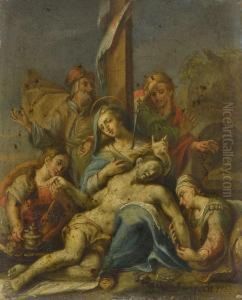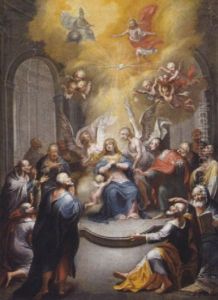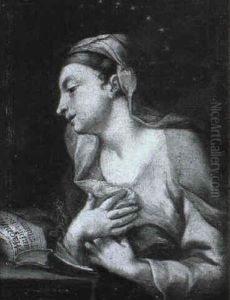Johann Georg Wolcker Paintings
Johann Georg Wille, born Johann Georg Wolcker, was a notable German engraver who made significant contributions to the art of engraving in the 18th century. Born on May 5, 1700, in Königsberg, now Kaliningrad in Russia, he moved to Paris in his youth, where he changed his name to the more Gallic-sounding 'Wille.' His career flourished in France, where he became known for his exceptional skill in engraving.
Wille's work was characterized by its fine attention to detail and its ability to capture the nuances of light and shadow, which made his prints highly sought after. He was particularly adept at reproducing paintings as engravings, which allowed for the wider dissemination of artworks during a time when access to original paintings was limited to the elite. Wille's engravings covered various subjects, including portraits, landscapes, and genre scenes.
He became a member of the Académie Royale de Peinture et de Sculpture in 1746, which was a testament to his mastery of the craft and his esteemed status among his contemporaries. In 1761, he was appointed as the King's Engraver, further solidifying his reputation as one of the leading engravers of his time.
Wille was not only a practitioner of engraving but also a teacher, influencing the next generation of artists. His workshop was a hub for young engravers, and through his guidance, he helped to establish a long-lasting tradition of engraving in France.
Johann Georg Wille passed away on April 5, 1772, in Paris. His legacy continued through his students and the numerous prints that circulated throughout Europe, contributing to the visual culture of the era and preserving the art of engraving for future generations to appreciate.


